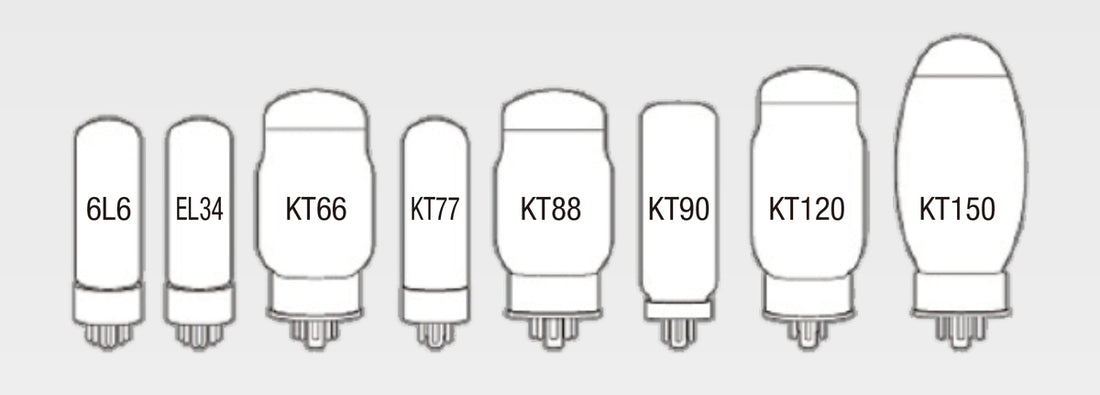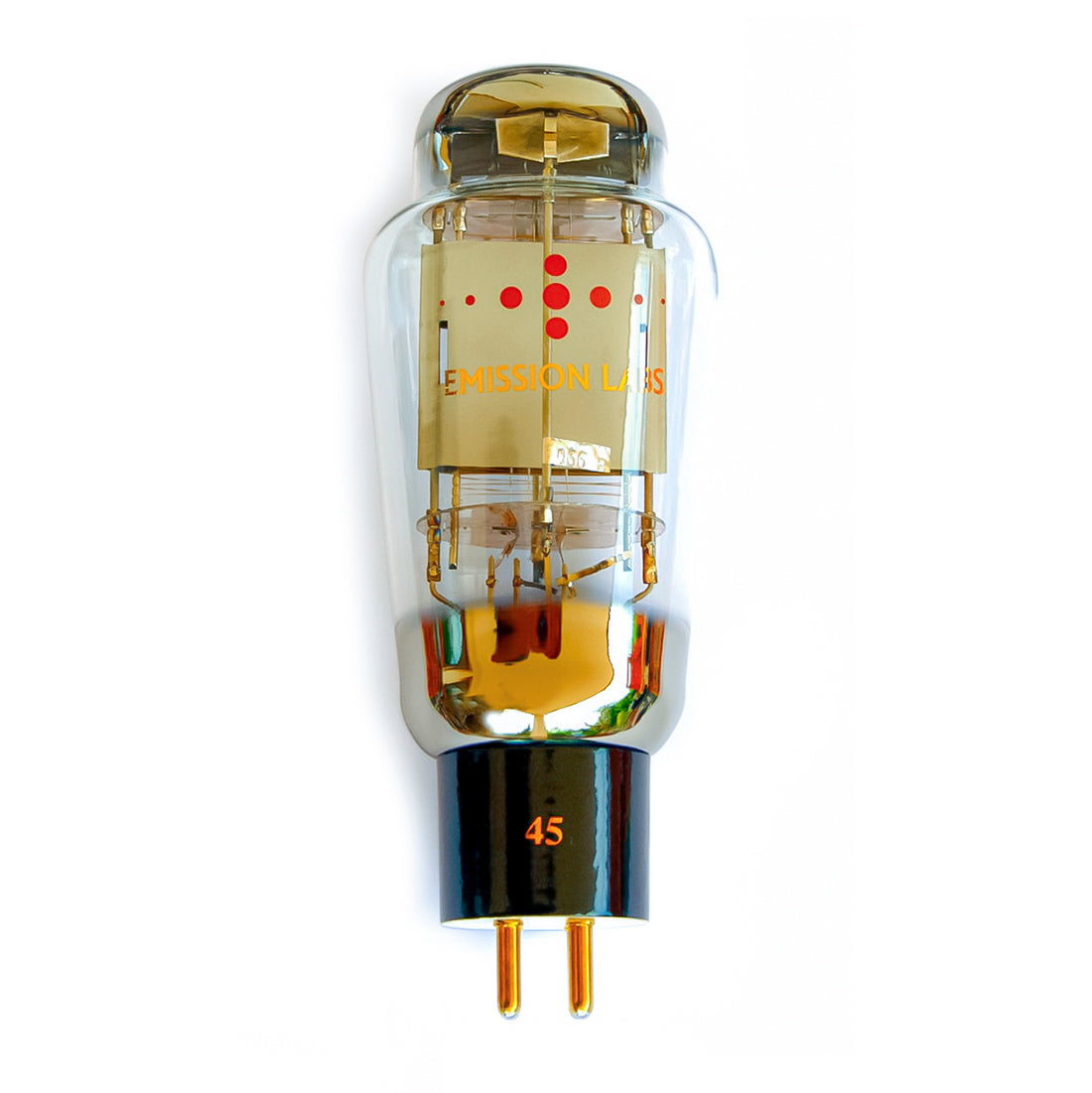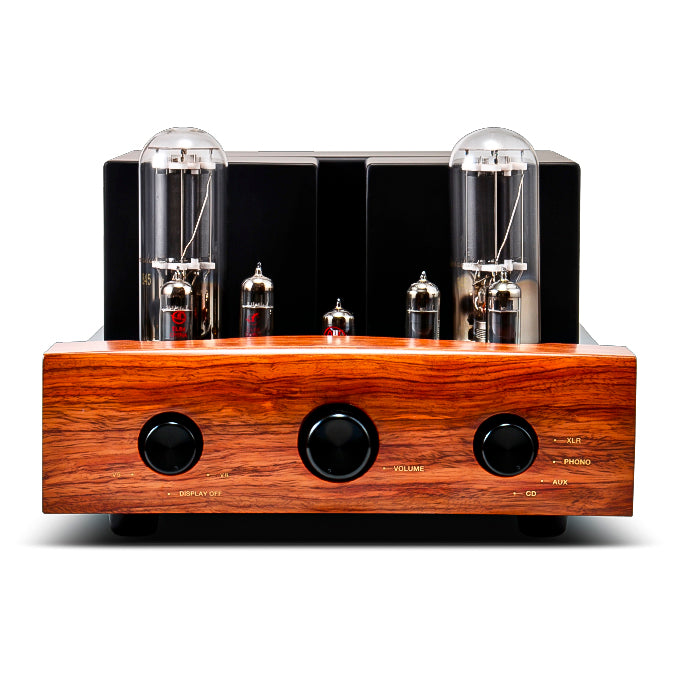Some of you may have a hobby of listening to music and are using a tube amplifier as a choice to enjoy higher quality music in the future, but what are vacuum tubes in reality? I think you have questions and concerns about what to do with after-sales maintenance during use. This time, I wrote about the after-sales maintenance of such vacuum tubes.
Click here for the product page of tube amplifiers
https://www.exclusive-audio.jp/shop/products/list.php?category_id=32
Click here for the product page of the amplifier in the photo
https://www.exclusive-audio.jp/shop/products/detail.php?product_id=628
A vacuum tube is a light bulb-like component that controls audio signals and current, and has been used for decades before the invention of transistors and semiconductors. In addition, vacuum tubes that are compatible with the same standard are manufactured by various manufacturers around the world, and you can replace them with vacuum tubes from a different manufacturer than the ones that came with the amplifier. What materials, manufacturing processes, and environments do vacuum tubes of the same standard use? Each manufacturer has its own characteristics in sound. Therefore, the fun of pursuing your favorite sound by replacing it with one from another manufacturer is also a big attraction of tube amps.
As for replacement, the pre-tube, which has the role of adjusting the disturbed sound signal among the vacuum tubes and delivering it to the power amplifier, can be easily replaced. However, the output tube, which amplifies and enlarges the audio signal sent from the pre-tube, requires bias adjustment to match the amount of current according to the vacuum tube used. Thankfully, many amplifiers now have self-bias adjustment, eliminating the need for troublesome bias adjustment, and it is possible to easily replace vacuum tubes of the same type and compatibility.
Even if the vacuum tube has not been replaced, just as a light bulb is a consumable item, the vacuum tube will also degrade in function after long-term use and will need to be replaced.
So, how long does a vacuum tube last, and when and when is it time to replace it?
One of the timings is when the vacuum tube breaks for some reason. It is easy to understand because air enters the glass tube, which is in a vacuum state like an incandescent bulb, and the internal line is broken, and the amplifier does not work properly and no sound is emitted. It's more of an accident than a lifespan.
And the other is longevity. In general, vacuum tubes have a fairly long lifespan, and are said to be used for about 5,000 hours. If it is this long, there is almost no regulation such as replacement time. In fact, many of the vacuum tubes on the market, as well as those from manufacturers that claim to be genuine, are unused stock or used items that were manufactured decades ago. If you use it in audio equipment, depending on how you use it, there are some masterpieces that will sound good even if it is decades old. Even so, the deterioration progresses gradually, so I think that it is not uncommon for people to continue using it without realizing that the performance has already deteriorated due to their longevity.
Unlike the easy-to-understand broken pattern that makes no sound at all, the symptoms of life expectancy are listening, and it's like there's noise on the sound ... Is the sound a little distorted? The sound may be small... It can be very ambiguous. If the sound is different from what you remember, suspect that the vacuum tube has deteriorated or aged. It's sloppy, but it's that hard to understand due to familiarity and changes in the system. For this reason, some amplifiers have a meter that allows you to check the status of the vacuum tube at any time.
Click here for the product page of the amplifier in the photo
https://www.exclusive-audio.jp/shop/products/detail.php?product_id=196
In general, the lifespan of the vacuum tube itself can be visually confirmed, and as a symptom of deterioration, it is a change in the mirror surface at the top of the vacuum tube. This is a substance called a getter, which adsorbs impurities to prevent deterioration of the vacuum inside the vacuum tube, and is applied to a part of the back of the glass tube. With age and continued use, this silvery part will peel off and the color will fade, and the inside of the vacuum tube will darken. If these conditions can be visually confirmed, it is a standard that can be judged as the life of the vacuum tube. So, as a measure of lifespan, let's check the decrease in getters regularly.
Click here for the product page of the amplifier in the photo
https://www.exclusive-audio.jp/shop/products/detail.php?product_id=511
However, there is no need to be nervous about the service life, and as mentioned above, while replacing the vacuum tube with a vacuum tube of the same type or compatible model and enjoying the difference in sound quality, it is enough to carefully wipe the glass tube from time to time, or use anhydrous ethanol or the like for the pin part at the timing of replacement to carefully remove dirt.
To put it simply, if the bulb you are using has been bad lately, has become dark, or crackling, you can enjoy a tube amp with such a casuality that you think you need to replace it, so even if you are a first-timer, please do not hesitate to try it.





























